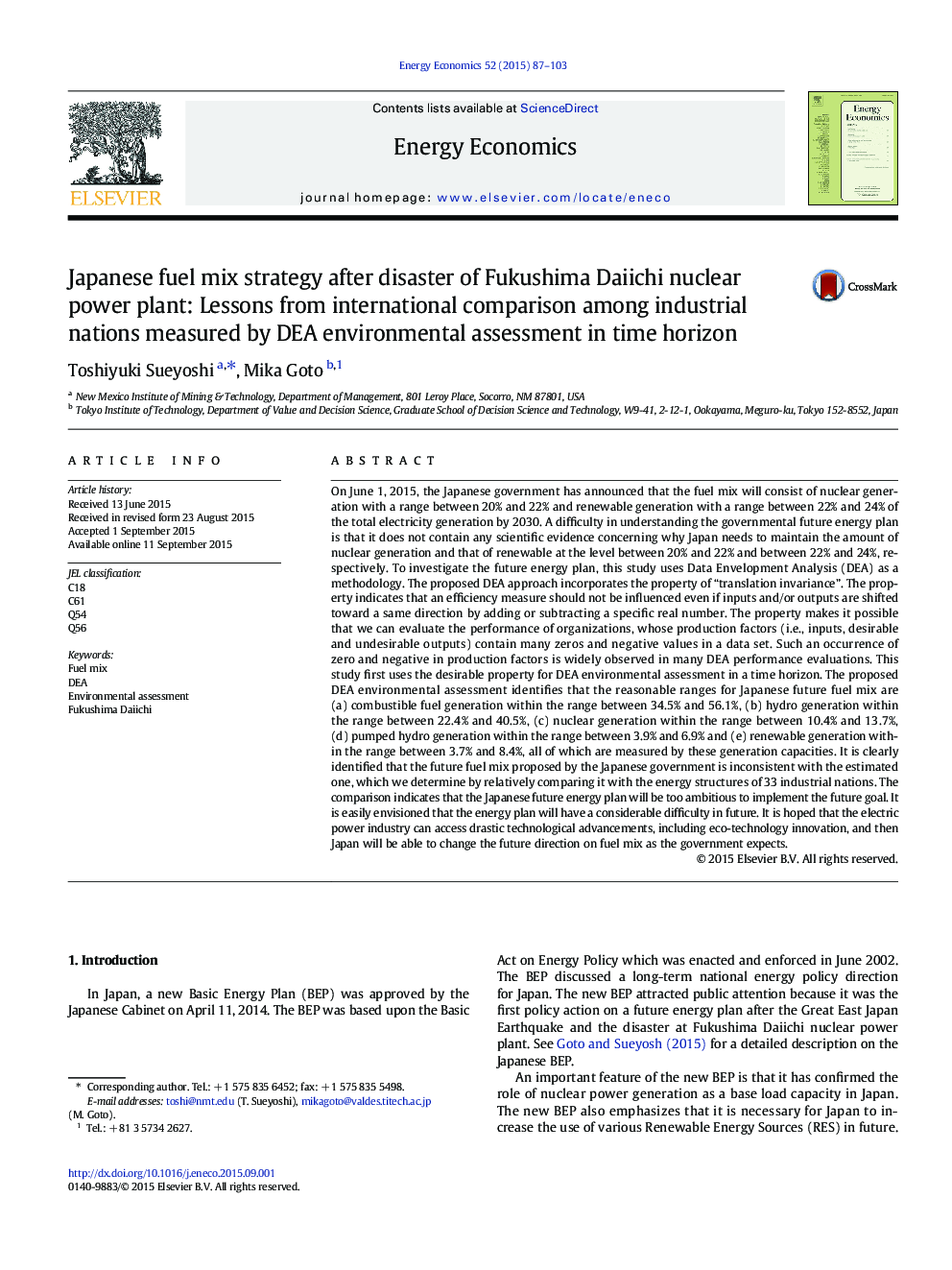| کد مقاله | کد نشریه | سال انتشار | مقاله انگلیسی | نسخه تمام متن |
|---|---|---|---|---|
| 5064160 | 1372280 | 2015 | 17 صفحه PDF | دانلود رایگان |
عنوان انگلیسی مقاله ISI
Japanese fuel mix strategy after disaster of Fukushima Daiichi nuclear power plant: Lessons from international comparison among industrial nations measured by DEA environmental assessment in time horizon
دانلود مقاله + سفارش ترجمه
دانلود مقاله ISI انگلیسی
رایگان برای ایرانیان
کلمات کلیدی
موضوعات مرتبط
مهندسی و علوم پایه
مهندسی انرژی
انرژی (عمومی)
پیش نمایش صفحه اول مقاله

چکیده انگلیسی
On June 1, 2015, the Japanese government has announced that the fuel mix will consist of nuclear generation with a range between 20% and 22% and renewable generation with a range between 22% and 24% of the total electricity generation by 2030. A difficulty in understanding the governmental future energy plan is that it does not contain any scientific evidence concerning why Japan needs to maintain the amount of nuclear generation and that of renewable at the level between 20% and 22% and between 22% and 24%, respectively. To investigate the future energy plan, this study uses Data Envelopment Analysis (DEA) as a methodology. The proposed DEA approach incorporates the property of “translation invariance”. The property indicates that an efficiency measure should not be influenced even if inputs and/or outputs are shifted toward a same direction by adding or subtracting a specific real number. The property makes it possible that we can evaluate the performance of organizations, whose production factors (i.e., inputs, desirable and undesirable outputs) contain many zeros and negative values in a data set. Such an occurrence of zero and negative in production factors is widely observed in many DEA performance evaluations. This study first uses the desirable property for DEA environmental assessment in a time horizon. The proposed DEA environmental assessment identifies that the reasonable ranges for Japanese future fuel mix are (a) combustible fuel generation within the range between 34.5% and 56.1%, (b) hydro generation within the range between 22.4% and 40.5%, (c) nuclear generation within the range between 10.4% and 13.7%, (d) pumped hydro generation within the range between 3.9% and 6.9% and (e) renewable generation within the range between 3.7% and 8.4%, all of which are measured by these generation capacities. It is clearly identified that the future fuel mix proposed by the Japanese government is inconsistent with the estimated one, which we determine by relatively comparing it with the energy structures of 33 industrial nations. The comparison indicates that the Japanese future energy plan will be too ambitious to implement the future goal. It is easily envisioned that the energy plan will have a considerable difficulty in future. It is hoped that the electric power industry can access drastic technological advancements, including eco-technology innovation, and then Japan will be able to change the future direction on fuel mix as the government expects.
ناشر
Database: Elsevier - ScienceDirect (ساینس دایرکت)
Journal: Energy Economics - Volume 52, Part A, December 2015, Pages 87-103
Journal: Energy Economics - Volume 52, Part A, December 2015, Pages 87-103
نویسندگان
Toshiyuki Sueyoshi, Mika Goto,